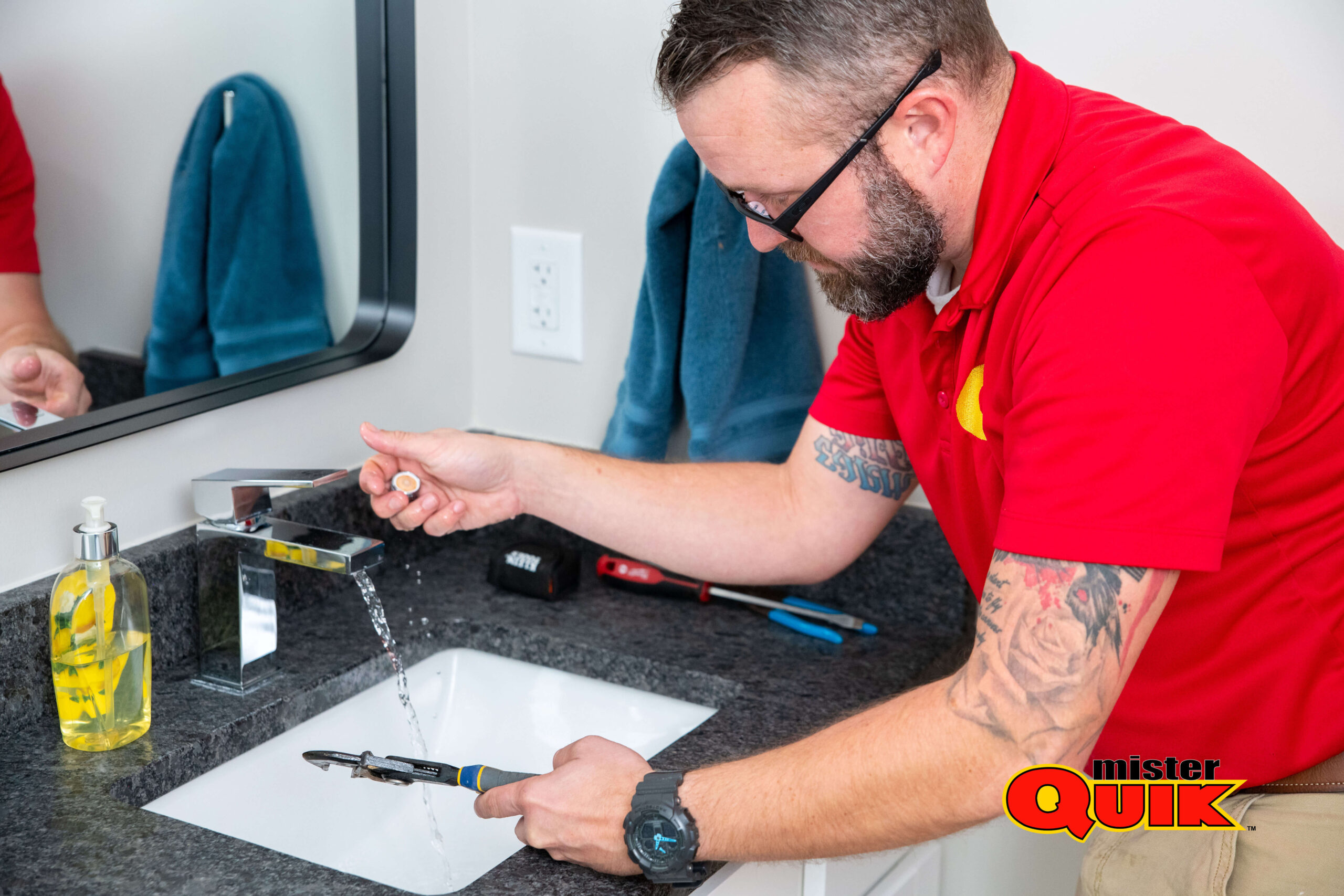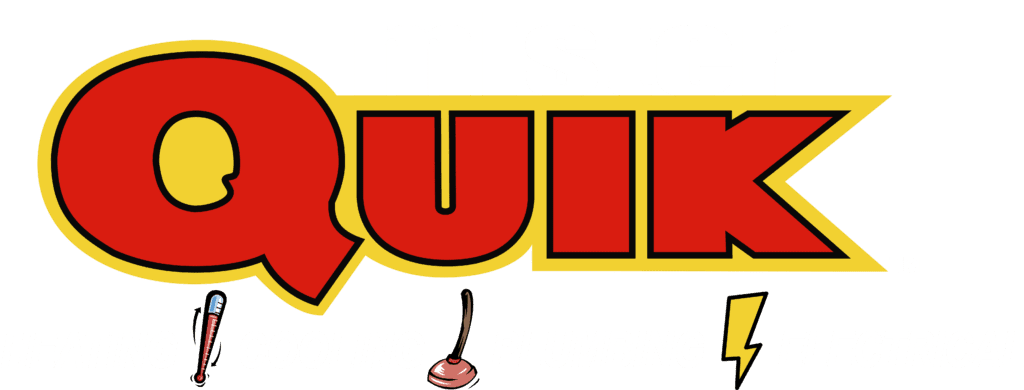Plainfield Water Heater Maintenance

Maintain A Water Heater: Repair And Service Guide
Proper maintenance of your water heater is crucial to ensure its longevity, efficiency, and to prevent potential malfunctions. Living in the City of Plainfield, where temperature fluctuations can be challenging, it’s essential to have a reliable water heater system. If you’re new to water heater maintenance, this step-by-step guide will walk you through the process of keeping your water heater in optimal condition. From routine inspections to troubleshooting common issues, understanding these practices will help you avoid unexpected breakdowns and enjoy a consistently reliable hot water supply.
Step-by-Step Guide on Water Heater Maintenance:
- Turn Off Power Supply: Begin by turning off the power supply to the water heater. For electric heaters, switch off the breaker, and for gas heaters, set the control knob to the “OFF” position.
- Flush the Tank: Sediment buildup can affect the efficiency of your heater. Attach a hose to the drain valve and let the tank flush out until the water runs clear.
- Check the Pressure Relief Valve: Test the pressure relief valve by lifting and lowering the lever. Water should flow out smoothly, indicating proper functionality.
- Inspect for Leaks: Visually inspect the tank and connections for any signs of leaks. Address any issues promptly to prevent water damage.
- Examine the Anode Rod: The anode rod prevents corrosion within the tank. Check it annually and replace it if it’s more than 50% corroded.
Maintaining your water heater in Plainfield is a vital aspect of home ownership, ensuring you have a reliable supply of hot water year-round. Regular inspections and simple troubleshooting can go a long way in preventing major issues and prolonging the life of your water heater. By following this comprehensive guide, you’ll not only become adept at routine maintenance but also gain the confidence to troubleshoot common problems, making your water heater a reliable and efficient asset in your household.
Water Heater Maintenance Tips
Proper maintenance of your water heater is crucial to ensure its longevity and efficiency. Living in the City of Plainfield, where temperature variations can be significant, it’s essential to pay attention to your water heater system. If you’re new to water heater maintenance, fear not. This guide will provide you with some straightforward do-it-yourself tips to keep your water heater in top-notch condition, ensuring a reliable and uninterrupted supply of hot water in your home.
Sediment buildup in the tank can decrease the efficiency of your water heater. Annually flushing the tank helps remove sediment, improving heating performance.
The pressure relief valve prevents excessive pressure buildup in the tank. Test the valve periodically by lifting and releasing it to ensure proper functionality.
Regularly inspect the area around your water heater for any signs of leaks. Addressing leaks promptly can prevent water damage and extend the life of your appliance.
Keep the water heater temperature at around 120 - 140 degrees Fahrenheit. This not only prevents scalding but also helps save energy and reduce wear on the system.
Consider adding an insulation blanket to your water heater. This minimizes heat loss, making your water heater more energy-efficient.
The anode rod prevents corrosion inside the tank. Inspect and replace the anode rod if it's worn out to extend the life of your water heater.
Regular maintenance is the key to ensuring your water heater operates efficiently and lasts for years. By following these DIY tips, Plainfield residents can avoid unexpected breakdowns, reduce energy consumption, and save on repair costs. Remember, a well-maintained water heater not only provides you with a steady supply of hot water but also contributes to the overall safety and comfort of your home.
Water heater maintenance consists of flushing the unit, checking and changing the anode rod if needed, inspecting for rust or leaks, and testing the thermostat and valves.
During your maintenance appointment, your water heater technician will check the anode rod to see if it needs to be replaced. Ignoring the anode rod is going to result in a rusted, broken water heater, making this a very important step. The tank will be flushed, connections tightened, and a full inspection for failing parts or leaking connections completed.
You should have your water heater serviced at least once per year. The most important part of water heater maintenance is flushing the tank. If you don’t flush it, sediment will build up inside your water heater’s tank.
Although water heaters are an essential part of our day-to-day lives, they tend to be forgotten when it comes to home maintenance projects. Fortunately, water heaters don’t require much maintenance, but they do need to be flushed about once a year, depending on how hard your home’s water is.
Why Water Heater Maintenance Matters
In the City of Plainfield, where the weather can be unpredictable, ensuring the smooth operation of your home’s water heater is paramount. While the water heater may be an often-overlooked appliance, its proper maintenance plays a crucial role in ensuring a reliable and efficient supply of hot water throughout the year. For homeowners without prior experience in water heater upkeep, understanding the significance of regular maintenance is essential for both comfort and cost-effectiveness.
- A well-maintained water heater extends its lifespan, saving you from premature replacements.
- Consistent maintenance enhances energy efficiency, resulting in lower utility bills.
- Regular check-ups can prevent potential issues, ensuring a steady and uninterrupted hot water supply.


The Benefits of Water Heater Maintenance: Proactive water heater maintenance brings forth a multitude of benefits that go beyond merely preventing unexpected breakdowns. By adhering to a routine servicing schedule, homeowners in Plainfield can experience:
- Efficiency Optimization: Regular flushing of the tank removes sediment buildup, allowing the heater to operate more efficiently.
- Energy Savings: Clean and well-maintained components require less energy to heat water, translating into lower energy bills.
- Consistent Performance: Addressing minor issues early on prevents them from evolving into major problems, ensuring a reliable hot water supply.
- Prolonged Lifespan: Routine maintenance significantly extends the lifespan of your water heater, safeguarding your investment.
The Risks of Neglecting Maintenance: Overlooking water heater maintenance can lead to a host of complications that may disrupt your daily routine and incur unnecessary expenses. In Plainfield’s dynamic climate, neglecting this essential task poses:
- Energy Inefficiency: Sediment buildup forces the heater to work harder, consuming more energy and driving up utility costs.
- Corrosion and Leaks: Untreated rust and corrosion can result in leaks, causing water damage and potentially compromising the structural integrity of your home.
- Sudden Breakdowns: Lack of maintenance increases the likelihood of sudden breakdowns, leaving you without hot water at inconvenient times.
In the City of Plainfield, where the weather can be demanding, prioritizing water heater maintenance is an investment in both comfort and financial prudence. By adopting a proactive approach, homeowners can enjoy consistent hot water, lower energy bills, and an extended appliance lifespan. Neglecting this crucial aspect of home management not only jeopardizes the reliability of your water heater but also exposes you to potential risks and avoidable expenses. Make water heater maintenance a priority, and you’ll reap the rewards in comfort, savings, and peace of mind.
How Water Heater Maintenance Services Works
In the City of Plainfield, ensuring the longevity and efficiency of your water heater system is crucial for uninterrupted hot water supply in your home. Understanding how water heater maintenance services work is essential for homeowners with little to no experience in this domain. Regular maintenance not only extends the life of your water heater but also ensures optimal performance, energy efficiency, and helps identify potential issues before they become major problems. Let’s delve into the step-by-step process of water heater maintenance services to provide you with a comprehensive guide.





A certified technician begins by conducting a thorough inspection of the water heater, examining components for signs of wear, corrosion, or leaks. They assess the thermostat settings to ensure the water temperature meets safety and efficiency standards.





The technician flushes the water heater tank to remove sediment buildup, a common cause of reduced efficiency and potential damage. This process enhances the system's heating efficiency and prevents sediment-related issues, such as overheating and corrosion.


Checking and, if necessary, replacing the anode rod is vital. This sacrificial component protects the tank from corrosion by attracting corrosive elements. Over time, anode rods degrade, and timely replacement is crucial to safeguard the integrity of the water heater.





The technician tests the pressure relief valve to ensure it functions correctly. This safety feature prevents excessive pressure buildup in the tank. If the valve is faulty, it may lead to a dangerous situation, and immediate replacement is advised.





For gas water heaters, the technician inspects the burner assembly, ensuring it ignites properly and the flame is clean. Electric water heaters undergo a check of heating elements and thermostat settings to maintain accurate temperature control.
In the City of Plainfield, water heater maintenance services play a pivotal role in sustaining the efficiency and longevity of your system. From the initial inspection to flushing the tank, replacing vital components, and checking safety features, a step-by-step approach ensures your water heater operates at its best. Regular professional maintenance not only prevents unexpected breakdowns but also contributes to energy savings, making it a wise investment for every homeowner. Schedule routine maintenance to keep your water heater in optimal condition, providing consistent hot water for your household needs.
Water Heater Maintenance Cost Guide
Maintaining your water heater is crucial for ensuring its longevity and efficiency, especially in a city like Plainfield where water heaters often work overtime. Understanding the costs associated with water heater maintenance is essential for budgeting and avoiding unexpected expenses. In this comprehensive guide, we’ll break down the various factors influencing water heater maintenance costs, providing you with a detailed overview of what to expect when investing in the upkeep of your water heating system.
1.Factors Affecting Water Heater Maintenance Costs:
- Type of Water Heater: Whether you have a conventional tank, tankless, or heat pump water heater will influence maintenance costs.
- Age of the Water Heater: Older units may require more frequent and extensive maintenance, potentially increasing overall costs.
- Extent of Maintenance Needed: Basic maintenance tasks like flushing the tank and checking for leaks typically cost less than repairs or component replacements.
- Professional vs. DIY Maintenance: While DIY maintenance can save money upfront, professional services often ensure thorough inspections and can prevent costly breakdowns.
2.Common Maintenance Tasks and Associated Costs:
- Flush the Tank: Flushing out sediment buildup costs around $80 to $200 depending on the size of the tank and complexity of the job.
- Replace Anode Rod: Anode rod replacement, essential for preventing corrosion, typically ranges from $350 to $700 including parts and labor.
- Inspect and Replace T&P Valve: Inspection and replacement of the temperature and pressure relief valve usually cost between $200 to $650.
- Check for Leaks: Detecting and repairing leaks may vary widely in cost depending on the severity and location of the leak, ranging from $400 to $900 or more.
3.Additional Considerations:
- Frequency of Maintenance: Regular maintenance can reduce the likelihood of costly repairs or premature replacement of the water heater.
- Warranty Coverage: Some maintenance tasks may be covered under your water heater’s warranty, reducing out-of-pocket expenses.
- Energy Efficiency Improvements: Investing in maintenance can improve the efficiency of your water heater, potentially leading to long-term savings on energy bills.
Maintaining your water heater is an investment in its longevity and performance, ultimately saving you money in the long run. By understanding the factors influencing maintenance costs and the typical expenses associated with common maintenance tasks, you can budget effectively and ensure your water heater continues to provide reliable hot water for years to come. Consider consulting with a professional service provider in Plainfield to assess your specific maintenance needs and receive personalized cost estimates tailored to your water heating system.
Steps On How To Maintain A Hot Water Heater
Maintaining a hot water heater is crucial to ensure its efficiency, longevity, and safe operation. For Plainfield residents like yourself, understanding the steps for proper maintenance can significantly contribute to the overall well-being of your water heating system. Regular maintenance not only extends the life of your appliance but also helps in conserving energy and reducing utility costs. Here’s a comprehensive guide to assist you in maintaining your hot water heater with confidence.
Before starting any maintenance, turn off the power supply to the water heater. For electric heaters, switch off the breaker, and for gas heaters, set the control knob to the "pilot" or “off” position.
Close the cold water inlet valve to stop water flow into the tank. This prevents additional water from entering during the maintenance process.
Connect a hose to the drain valve at the bottom of the tank and open the valve to release sediment and mineral buildup. Flushing the tank annually helps maintain its efficiency.
Lift and release the valve's handle to ensure it operates freely. If no water flows through the drainpipe, or if it continues to drip, it may be a sign that the valve needs replacement.
The anode rod is a sacrificial component that protects the tank from corrosion. Check it annually and replace it if it's more than 50% corroded.
Inspect all connections, valves, and pipes for any signs of leaks. Address any issues promptly to prevent water damage.
For gas water heaters, inspect the burner and combustion chamber for soot or debris. Use a vacuum or brush to clean these components if necessary.
Set the water heater's temperature to 120°F (49°C) to prevent scalding and improve energy efficiency. Adjusting the temperature also minimizes mineral buildup.
Incorporating these maintenance steps into your routine will help you keep your hot water heater functioning optimally. Regular attention to your water heating system not only ensures a reliable supply of hot water but also contributes to energy savings and a longer appliance lifespan. As a resident of Plainfield, taking the time to perform these maintenance tasks will provide you with peace of mind and a more efficient water heating system for your home.
Troubleshoot Checklist:
- Turn off power supply: Ensure the power is switched off, either at the breaker for electric heaters or setting the control knob to “pilot” or “off” for gas heaters.
- Check thermostat and heating element: Verify thermostat settings, and for electric heaters, inspect and reset the heating elements if needed.
- Flush the tank: Regularly drain the tank using the drain valve to remove sediment.
- Inspect for strange noises: If unusual sounds persist, consider sediment buildup; flush the tank to minimize noise.
- Pressure relief valve: Lift and lower to test; water should flow smoothly. Replace if faulty.
- Leak inspection: Visually check tank and connections for leaks; address issues promptly to prevent damage.
- Adjust thermostat: Set the thermostat to around 120°F (49°C) to prevent scalding and improve energy efficiency.
- Inspect and replace faulty thermostat: If inconsistent temperature persists, consider replacing a malfunctioning thermostat.
- Examine anode rod: Check annually for corrosion; replace if more than 50% corroded.
- Address corrosion promptly: Prevents tank corrosion, ensuring prolonged water heater lifespan.









